Dear Allscripts,
I fully realize that you have bigger fish frying on the Allscripts skillet. Further, you probably don’t really care about what one little solo trench grunt thinks, but I’d like to throw this out there anyway. If it gives you any cause to pause and reconsider any future decisions, maybe that’ll be worthwhile. (Lord knows some Allscripts decisions over the past few years could have benefitted from a pause or three.)
While I know you are aware of most of the backstory, please indulge me a moment for those who may not know it so well as I run through a brief history.
About two and half years ago, you acquired Eclipsys. When you did, you acquired my then-favorite EHR, Peak Practice. (I’ll try to call it Peak Practice, but I still think of it as Bond Technologies’ “Clinician,” which was the original incarnation’s name.) You then built a beautiful set of Web pages devoted to the new “Allscripts Peak Practice” and promised end users that it would continue to be supported.
Not being a corporate insider – and not having fly-on-the-wall transmogrification capability – I have no real clue as to why you decided shortly thereafter to pull Peak’s plug. I was told it was because you had too many products and Peak was more difficult to support, in part because it was so technically sexy. The founders understood how to support it, though Eclipsys certainly had its share of difficulties in learning how to implement it correctly. Maybe the latter colored your go-forward decision. Regardless of the reasons, Peak’s plug was pulled and the Web pages vanished.
At the time of the acquisition, I was working on the Eclipsys design team for Peak Practice’s “Notes 2.0.” (I had moved up the food chain with Clinician, starting with helping the Bond team bulk out the pediatric side of its offering, through MediNotes, and onto Eclipsys. It was a rocky ride, to be sure, but it had really started to get good.) We were fairly far along with the notes engine’s redesign and it was going to be gorgeous! If we’d have been allowed to finish its development, I have no doubt that it would stand up against ANY current EHR for both functionality and user experience.
I know this because two and a half years later, I am still using Clinician…er, Peak Practice. Why? Because frankly, after far too many demos, I haven’t seen much that is truly any better. Most often what I see doesn’t even come close. (OK, I have seen a couple of systems recently that do have some serious knock-my-socks-off wow factor, but, overall… diddly squat.) Most available EHRs/EMRs trail far behind Peak Practice in usability and functionality, if implemented correctly. And this remains true despite Peak having absolutely no development these past two and a half years! If Peak would have gotten development focus in that time … well, I can hardly imagine.
Moving forward, you offered to move existing Peak Practice clients onto your MyWay product for free. Many did. I did not. (Didn’t like it, not one little bit.) Now as you know, you’ve also sunsetted MyWay. If I was one of those poor wretches who had been forced to migrate once and then once again within about two years, I’d be livid – either that or I’d have transitioned into forestry or some other trade wholly non-EHR-related.
Migrating from one workflow to another sucks. Period. Doesn’t matter if it’s a better workflow in the end or not, the transition is still difficult. You know, it’s the whole “providers just want to provide, not become techies or practice redesign experts” thing. Paper to digital, digital to digital – transitioning your processes is an encumbrance, a nuisance, and, honestly, just a pain in the derrière.
Why did I lay out this whole trail of tears? Because I was recently informed that the EDI server which you maintain and which facilitates my e-prescribing and lab interface (for which I had to pay good money to obtain) is to be shut down August 31. I was told I can keep using Clinici…er, Peak Practice on my servers, but will lose those capabilities.
Once you’ve gotten a taste of the future, it’s virtually impossible to consider going back to the meager meals of the past. I want my delicious interfaces. Thus, without intervention or switching to a new system, I’ll be forced into Luddite mode.
Thus, my dear Allscripts, you’ve again left me feeling abandoned and abused. Is it your fault? Not really. You have a business to run and shareholders to satisfy. I get that. But, maybe, just maybe, the decision to tank Peak Practice in place of the now-tanked MyWay was a regrettable decision and one that deserves a revisit. Maybe the following option would be a cause to pause here for a moment to reconsider your choices.
The founder of Bond Clinician once offered to buy Peak Practice back from you. I was told you wouldn’t give it up because you didn’t want the competition. But considering the recent success rate in the outpatient EHR world that you’ve “enjoyed,” perhaps a little creative thinking might be in order. Why not offer Mr. Bond (or anyone else smart enough) the opportunity to buy back the rights to Clinicia…er, Peak Practice, perhaps structuring a royalties deal where you and your shareholders could reap the benefits without worrying about supporting the product?
Sounds like you have your hands full unscrambling some recent events and turning a rather large ship into calmer waters. Perhaps doing the right thing by Peak and letting it go would create some good karma. Besides, do you seriously think competition from a revived Clinician would be something you really need to worry about for the foreseeable future when there’s so much else more pressing on your To Do list? Do you really think letting a great system go to pasture is doing you, your shareholders, or the world of healthcare in general any great service?
Sincerely,
From the trenches…
PS: I know, this is more fantasy than anything, but it was fun to dream just a little.
“You can’t put abandonment and alienation under arrest.” – Carrie P. Meek

Dr. Gregg Alexander, a grunt in the trenches pediatrician at Madison Pediatrics, is Chief Medical Officer for Health Nuts Media, an HIT and marketing consultant, and sits on the board of directors of the Ohio Health Information Partnership (OHIP).


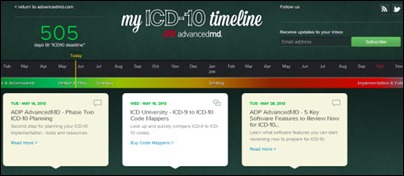



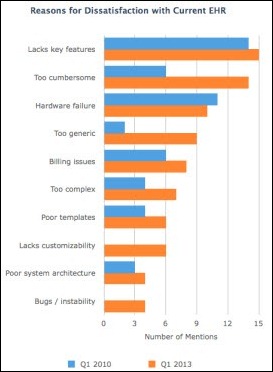

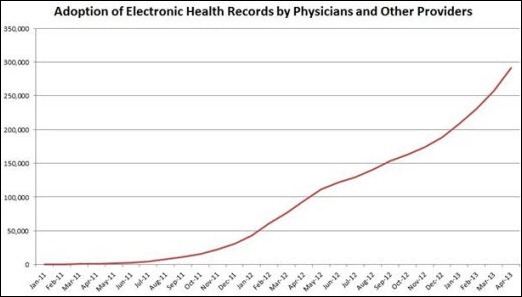

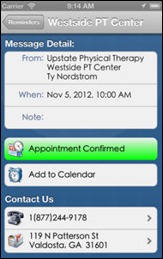
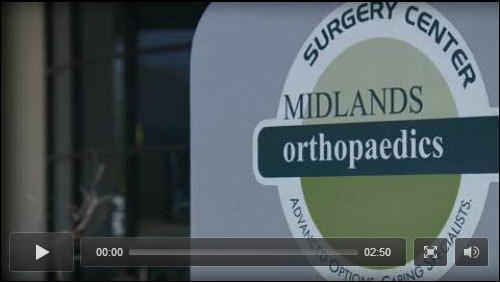
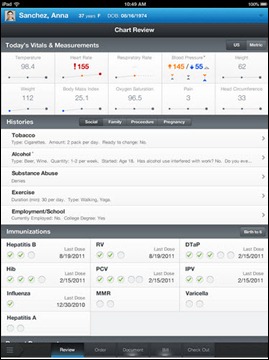

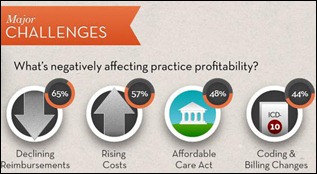

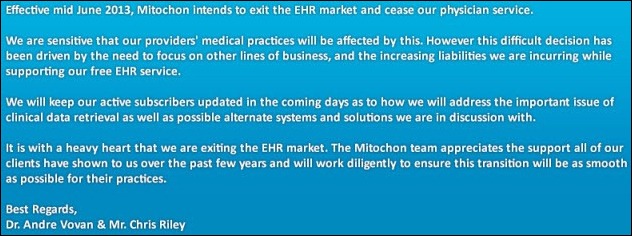


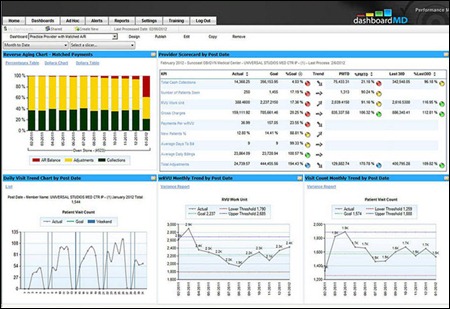
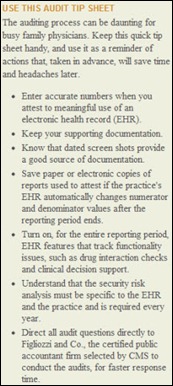

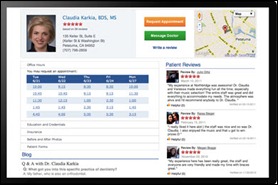



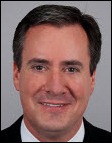
Re: Walmart Health: Just had a great dental visit this morning, which was preceded by helpful reminders from Epic, and…